Submitted Review
‘Genus hopping ikebana’
Karla Marchesi ‘Sugar Fever Dream’
Artists can form bodies of work for an exhibition in many ways. Some prepare them tight, like a sonnet, no flab, strictly issued and presented. Others build through an experience of making the work and at some point, need to disgorge the studio, either to empty their space (and mind) or to simply stop. This latter lexiconic approach relies on the gallerist to articulate this mass of information into a directional paragraph embodied in the presentation that could guide the audience.
This is not the case here; all the work is up and out (except one or two). You must trench and wade against a strong current of images into the densely hung space to find a place to pause. The lushly coloured images and cacophony of creatures reveal the struggle of the painter. Close inspection illuminates mark-making and variety of surface textures that won’t telegraph through the screen, a visit is beneficial.
In this feverish cauchemar there seem to be three sets of representation. The first I think of as plausible realities. Brooding murky tableaus of succulents and desiccated bouquets foregrounded by soap bubbles or greedy cephalopod’s dutifully cleaning a carcass in a submarine half-light.
A long history of assembling the implausible exists in western art. Rosslynd Piggott’s recent show at Milani Gallery, while more ethereal, draws on the “impossibility of accumulations” that due to disparate geography or seasonality can only coexist in our imagination. So too, do the recent ‘Natures Mortes’ photographic collages of Michael Cook, shown at Andrew Baker. Where arrangements of highly coded and loaded objects, some distorted in scale and association, hold a message of condemnation. Meanwhile in Melbourne (by way of Berlin), the piled high montaged images of flora, fauna and fantasy, both European and Antipodean, roil and invert as your eye shudders from plume to petal to scale. Genus hopping ikebana is this threaded with swirling menace, knotted with slippery serpent bindings and interrupted by thrusting predator jaws.
There is ample overlap between these loosely bordered observations leading to the third mood which seems more reduced by comparison. In the case of ‘Allora’ what might be an orgy of headless reptiles, reveals more formal compositional concerns, colour play and technical sorting out than other works. This withdrawal might hint at Marchesi’s process. Where ‘And then’ is so light in touch and tough in subject that you start to wonder why there was an arrest in this work and others not.
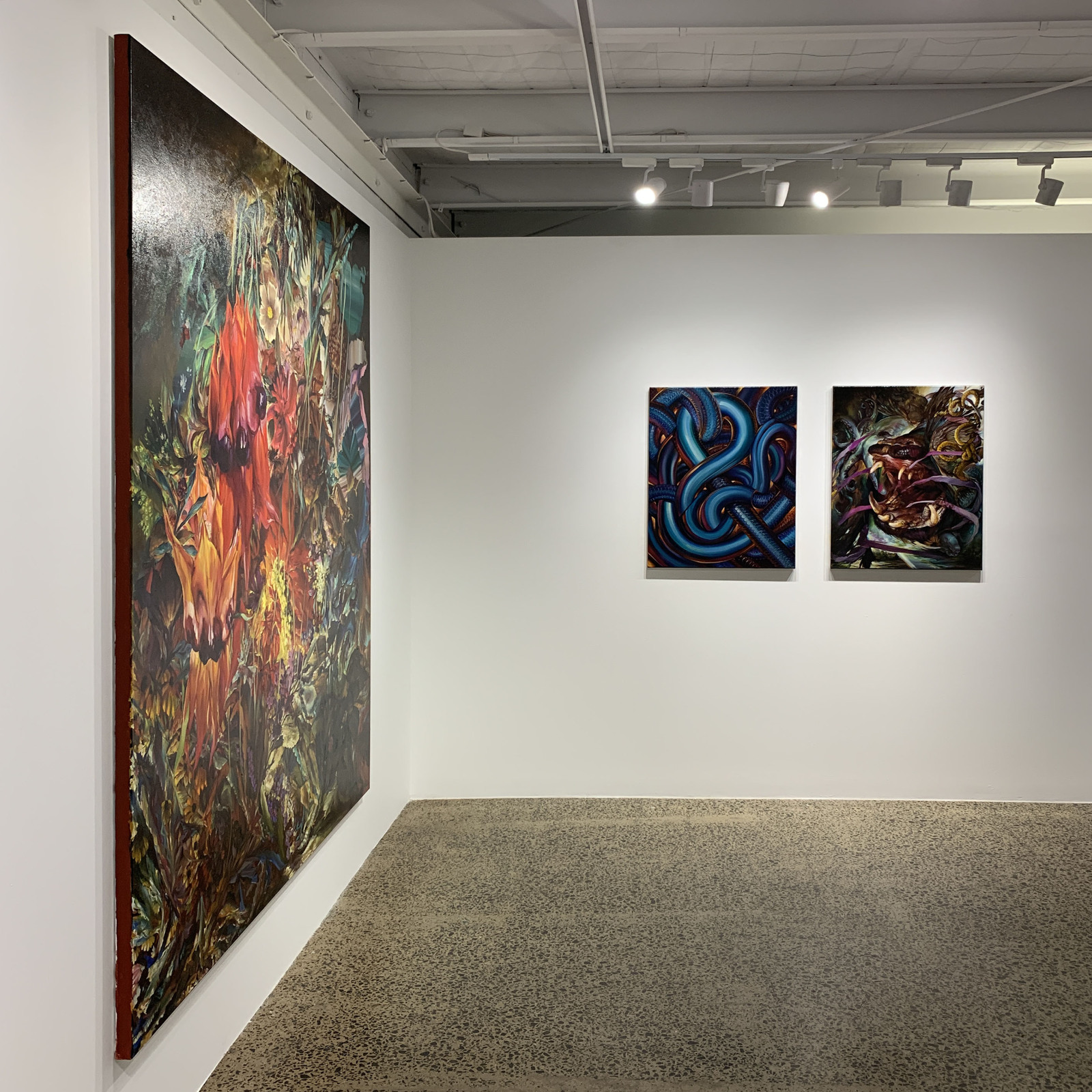
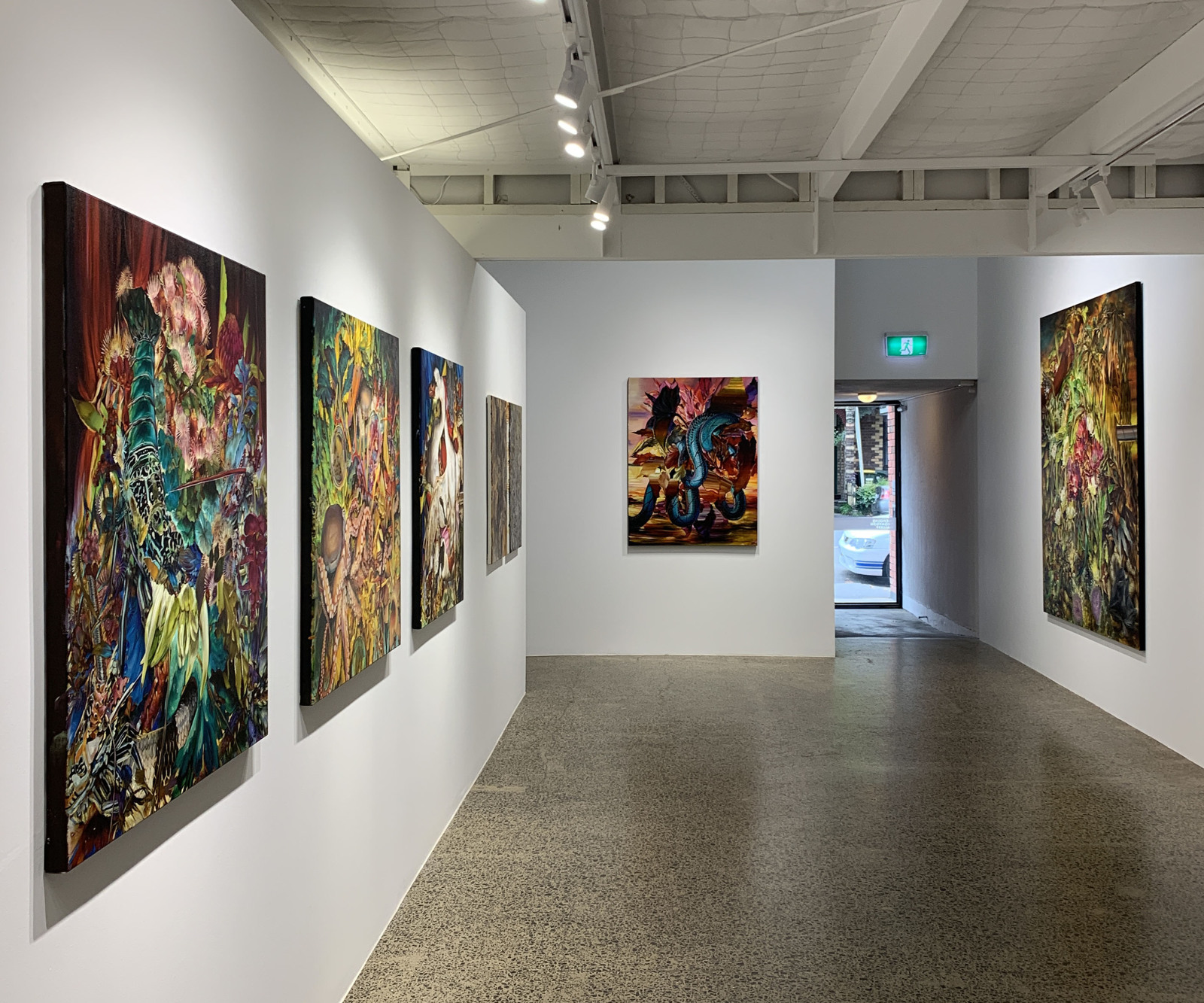
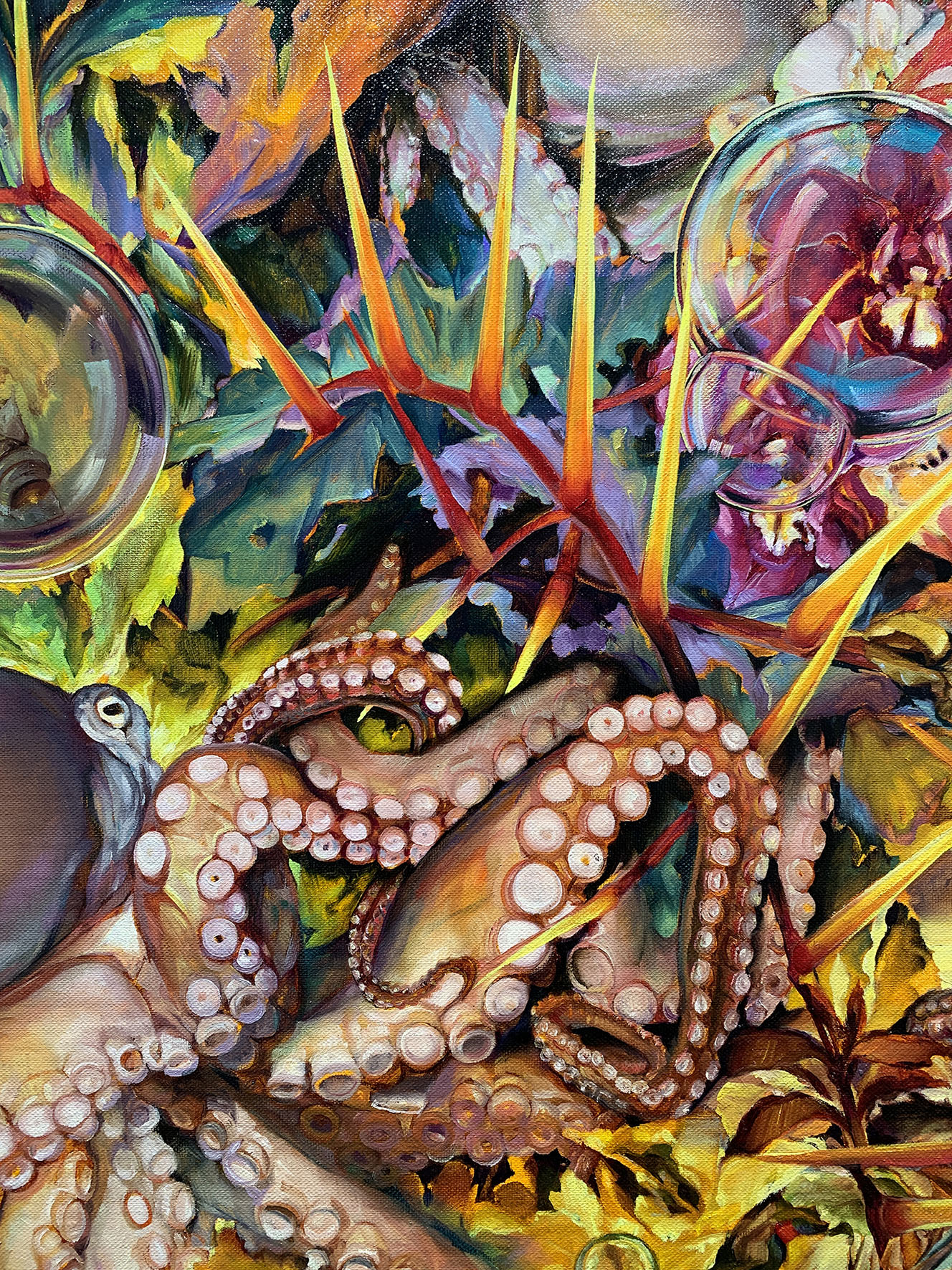
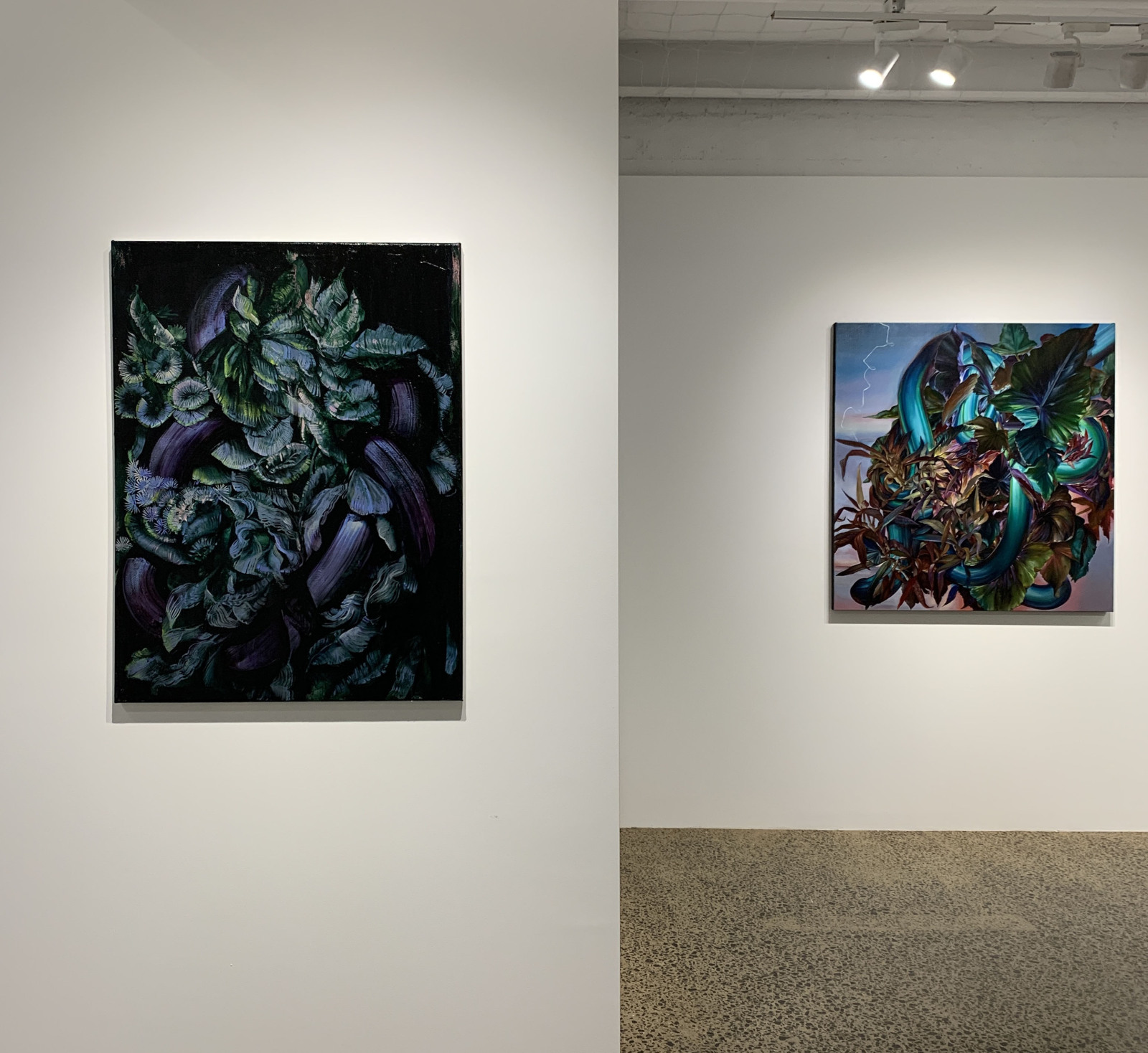
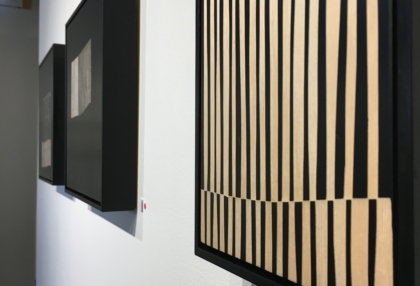
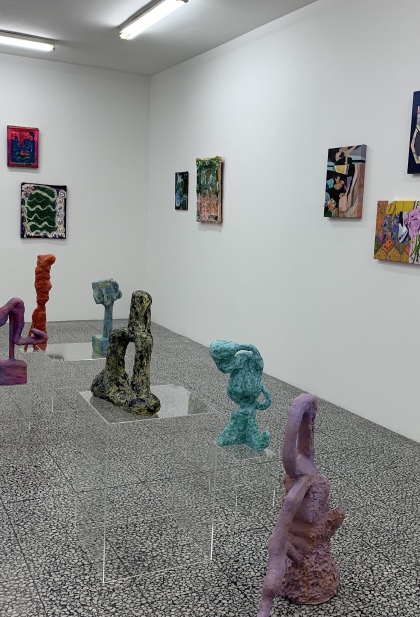
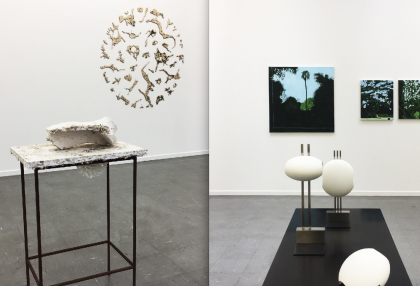
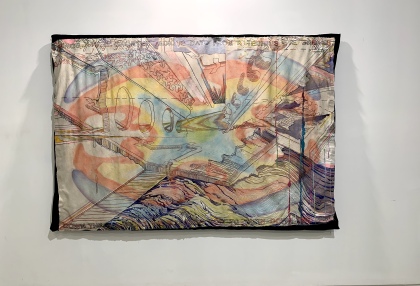
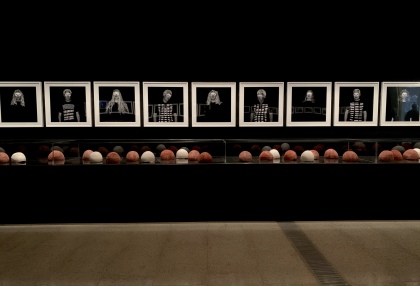
No Comments